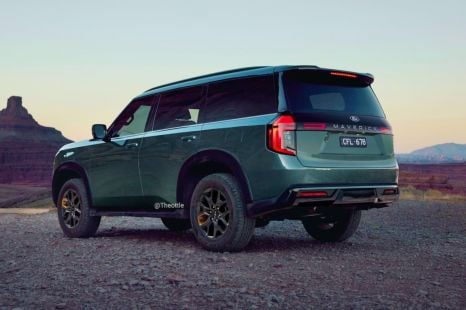

Ben Zachariah
Move over, Patrol: New-era Ford Maverick SUV imagined
3 Days Ago
There’s a new mid-range variant to bolster the Hyundai Palisade range, bringing a more enticing value pitch to the big seven- and eight-seater.
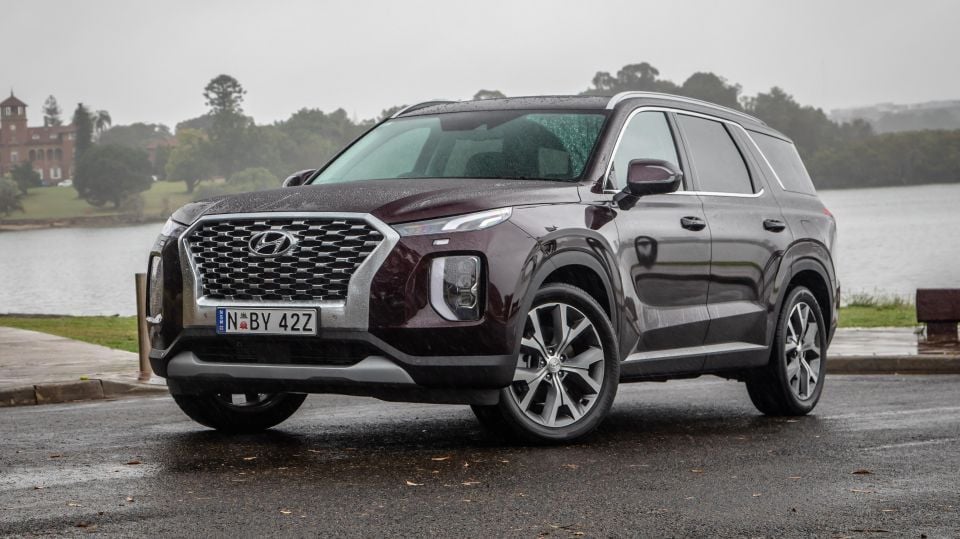
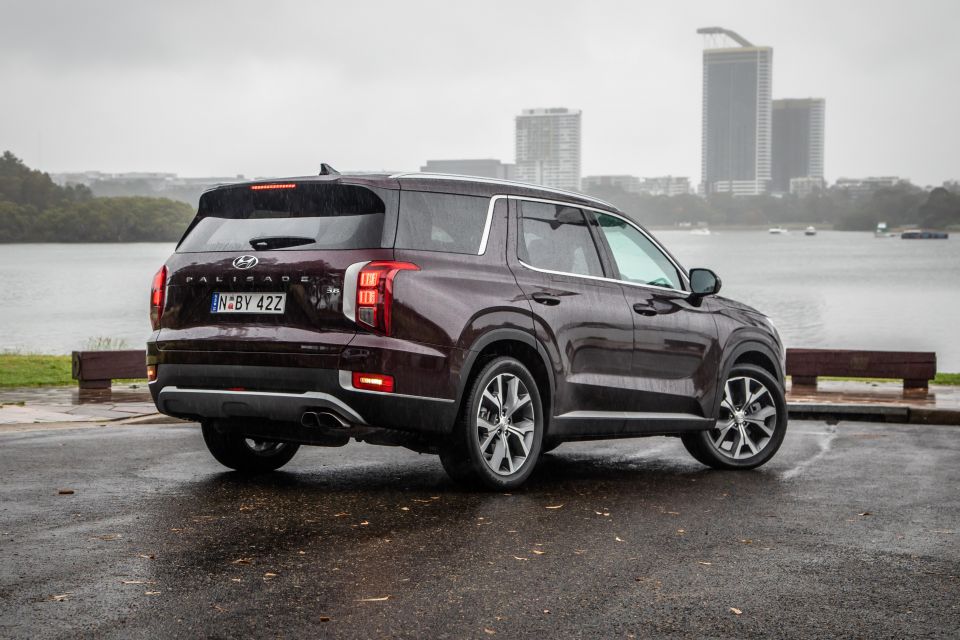

Journalist
New from
$60,000
excl. on-roads

Journalist
New from
$60,000
excl. on-roads


Journalist
New from
$60,000
excl. on-roads

Journalist
New from
$60,000
excl. on-roads
Quickly see how this car stacks up against its competition. Select any benchmark to see more details.
Where expert car reviews meet expert car buying – CarExpert gives you trusted advice, personalised service and real savings on your next new car.
Plus-sized, chrome-laden, palatial in space and its on-road approach, it’s crystal clear Hyundai’s Palisade is primarily focused on the US market, right down to the name.
And while the Korean marque isn’t new to Americanised branding – Tucson, Santa Fe, Palisade – its tree-topping family hauler embraces luxury more enthusiastically than its smaller, thriftier stablemates.
To date, in its relatively short existence, it’s delivered nicely on its promise. Of the launch range’s two available variants, the Sydney CarExpert Experience Centre featured a low-grade version on the floor and good eight-of-10 pundits were surprised they weren’t climbing into and out of top spec, such is the Palisade’s deftly executed presentation.

The new 2022 update might confuse tyre-kickers further, with the arrival of a new mid-grade version that’s predictably adopted the Elite badge. No prizes for guessing the newcomer amalgamates spec and features from carryover base and Highlander versions in hope of striking a ‘just right’ package.
Other Palisades have rated well in CarExpert reviews to date. The base petrol V6, in MY21 guise that was reviewed here six months ago, received a commendable 8.3 rating.
So there are some big expectation for this new higher grade Elite, given the MY22 brings with it a revised value pitch and the perception of more SUV goodness for your hard-earned dollars.
The new mid-grade Palisade Elite 3.8 GDi 2WD, as it’s more formally known, is priced from $61,500 plus on-road costs. The big news here is that’s just $1500 more than the outgoing base version, which has copped a price drop in MY22 guise to $55k before on-roads.
Diesel and AWD? That powertrain in Elite grade demands a $4000 premium ($65,500) over the petrol FWD. Climbing up into the ultimate Highlander trim demands $71,000 and $75,000 respectively for the petrol and diesel versions.
In our as-tested form, the Elite V6 FWD competes against mid-level Mazda CX-9 GT ($62,990 list) and the fresh-off-the-boat new Toyota Kluger that, in middling GXL trim, undercuts Palisade Elite whether you opt for petrol front-drive ($58,850) or petrol all-wheel drive ($60,850).
Closer to home, if you’re wedded to Hyundai, the Santa Fe Elite V6 FWD clocks in around $6000 cheaper ($54,300) and you can swing into Highlander grade – more goodies, smaller body – for similar money ($61,700) to our Palisade Elite. The new Staria, too, is the other ‘family’ option (in both senses), sitting at $56,500 for, you guessed it, Elite V6 FWD.
The Palisade Elite comes in five available colours, four of them commanding a $695 premium each.
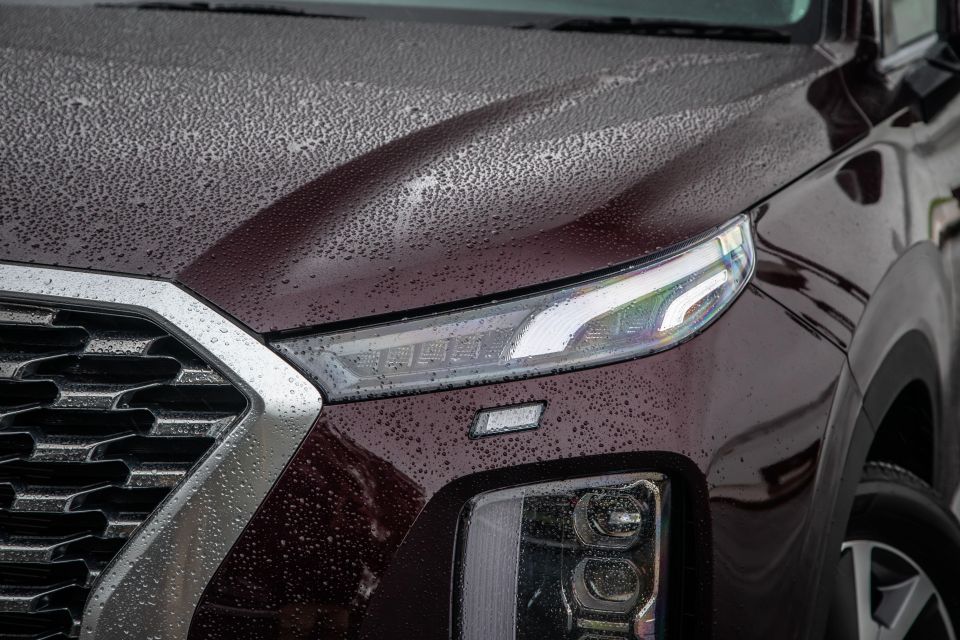
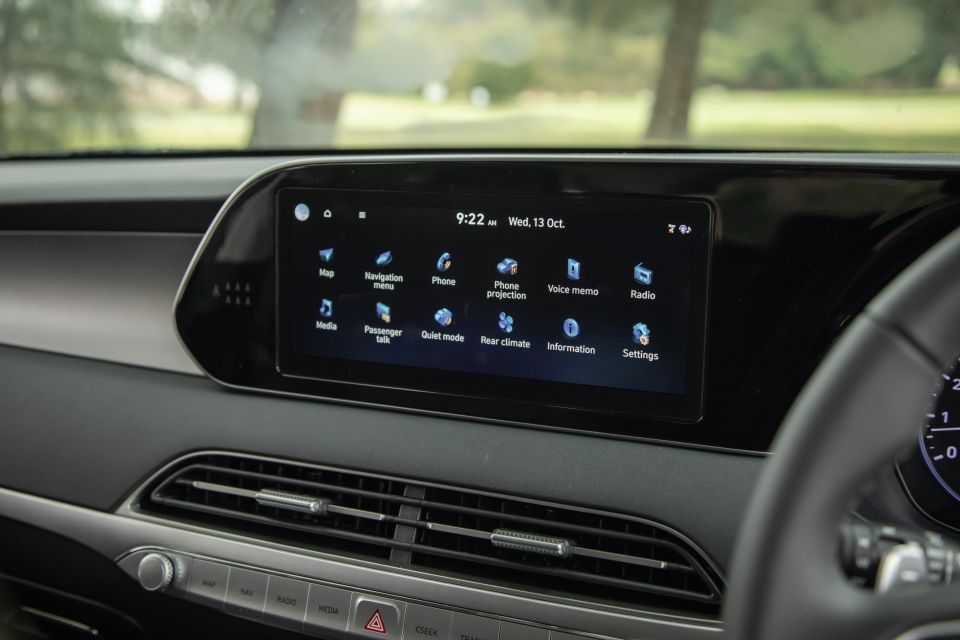
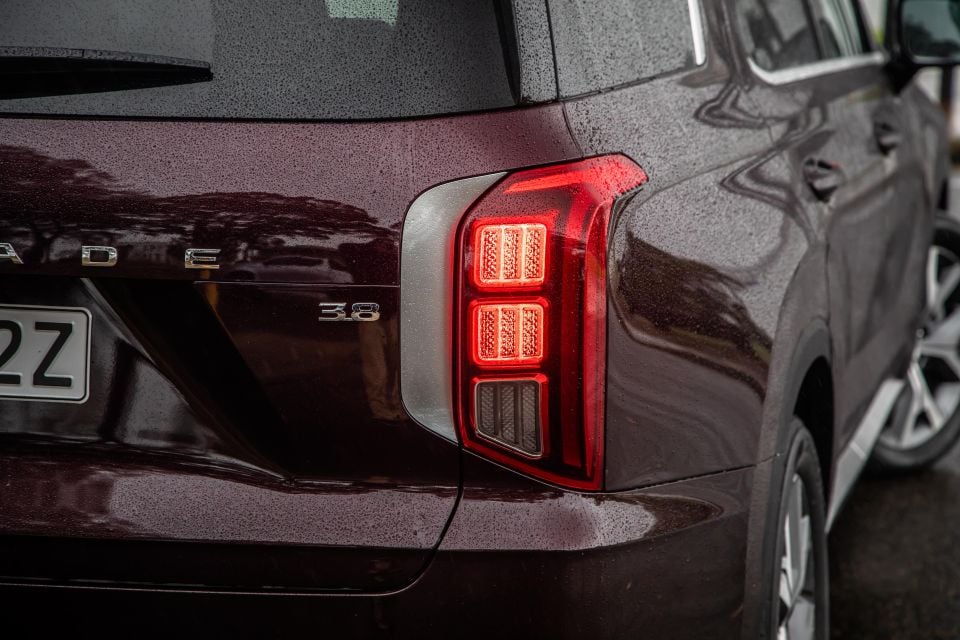

Buy your new car without the stress. It's fast, simple and completely free.

Great service from Travis and team, second time I have used this business would not hesitate to recommend them to anyone
Craig C.
Purchased a Ford Ranger in Sunshine Coast, QLD
CarExpert helped Craig save thousands on his Ford Ranger, now let us save you on your next new car.
Find a dealDissecting what the base Palisade has lost in conversion to the its more affordable 2022 spec deserves its own dedicated review. So as not to overly confuse matter, let’s compare today’s Elite and the current, revised base model.
Elite upgrades include 20-inch wheels, LED headlights and tail lights, a powered tailgate, rear privacy glass, heated front seats, a single-panel sunroof, and the option of a seven-seat rear captain chair layout (2+2+3) rather than the regular eight-pew (2+3+3) configuration.
The middle variant also has a 10.25-inch touchscreen – the base version has been downgraded to 8.0 inches and loses inbuilt mapping – which brings proprietary satellite navigation, driver talk function, and 12-speaker Infinity audio.
Shared with the base model are auto headlights, LED daytime running lights, leather-appointed seats and steering wheel, an electric driver’s seat, Apple CarPlay/Android Auto, inductive phone charging, keyless entry and start and tri-zone climate control with row two and three ventilation. Front and rear parking sensors, as well as a reversing camera, are also standard.
In short, the Elite brings much of the look and vibe of the Highlander version, sans some niceties such as Nappa leather, suede headliner, a head-up display, 360-camera system etc.
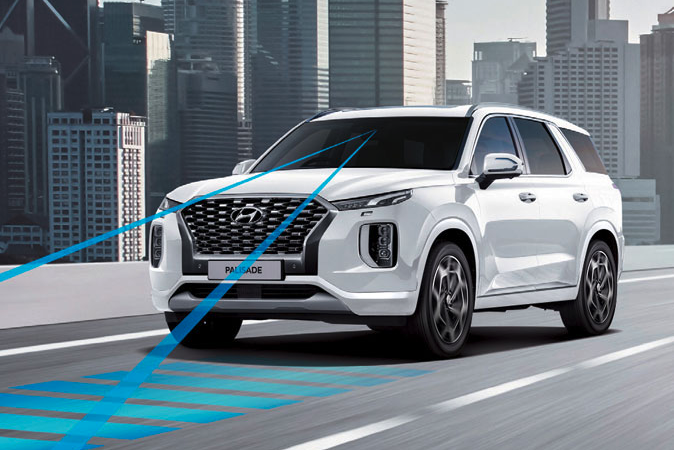
At the time of writing, Palisade had not been tested by ANCAP nor Euro NCAP, the latter logical given the model isn’t sold in Europe.
With that said, the Palisade has received a ‘Top Safety Pick+’ rating from the US’s Insurance Institute for Highway Safety (IIHS) for the 2021 model year, based on tests conducted on the related Kia Telluride.
All versions of the Palisade feature the Hyundai SmartSense suite as standard:
There’s also dual front, front-side, and curtain airbags that stretch across all three rows for a total of six inflators.
Opting for the flagship Palisade Highlander adds Hyundai’s Blind Spot View Monitor camera system bolstering the standard blind-spot assist system, as well as a surround-view camera and Safe Exit Assist – the latter warning occupants of oncoming vehicles and road users when opening the doors.
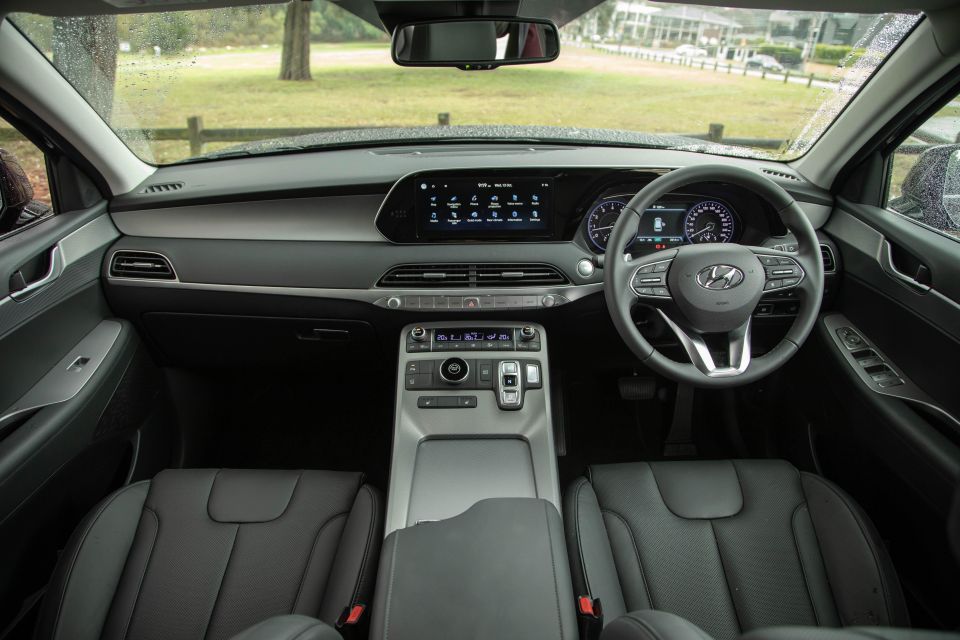
Clean, sophisticated and reasonably upmarket, the Palisade manages to meld Euro touches with a vibe tailored to contemporary American tastes without feeling trite, contrived, or necessarily ‘region flavoured’.
The net design effect is oh-so Hyundai at its classy and restrained best, albeit without the overt material frills the Highlander cabin features.
In Elite, black is it – the flagship gets a choice of colour themes – and it lacks the richness of the suede and Nappa appointment further upstream. But as it presents itself, the Elite still feels luxury-focused and exudes a classiness a cut above many large mainstream SUV offerings.
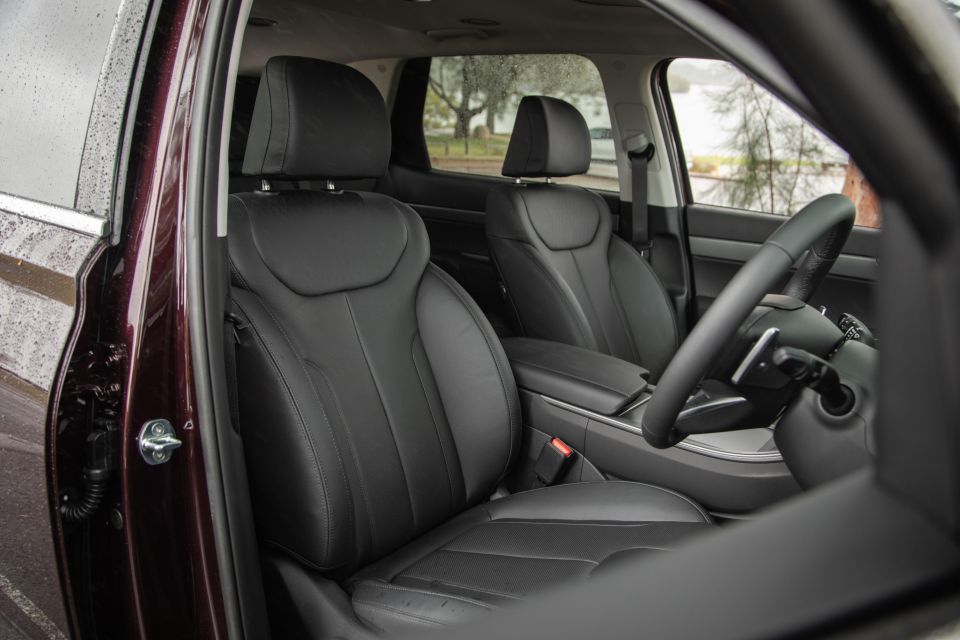
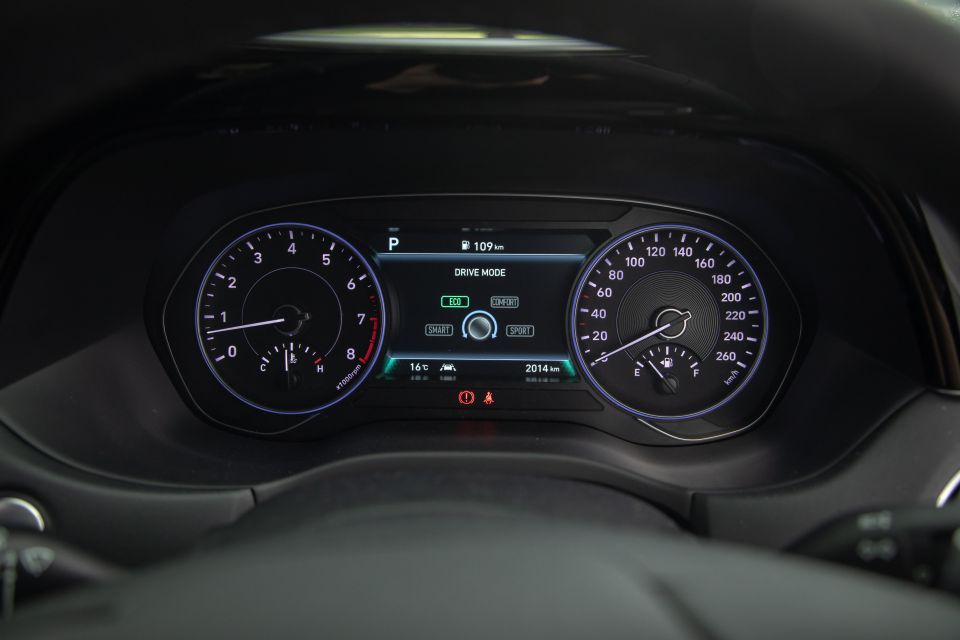
The sense of space is impressive, thanks partly to sheer cabin width and the impressions garnered from the clean horizontal dash fascia and that huge, flat-top centre console.
The hint of Mercedes-Benz in the centre stack layout, with slick infotainment shortcut buttons, and the push-button transmission controller do feel good. Everything seems intuitively placed and ergonomically sound.
The 10.25-inch touchscreen infotainment system is bright, colourful and sharp, reasonably easy to use on the fly from the helm without too much distraction and, with its 12-speaker Infinity audio, sounds good. It’ll be familiar to a good many existing Korean vehicle owners, because it’s used so widely adopted by both of the nation’s big carmakers across most model lines.
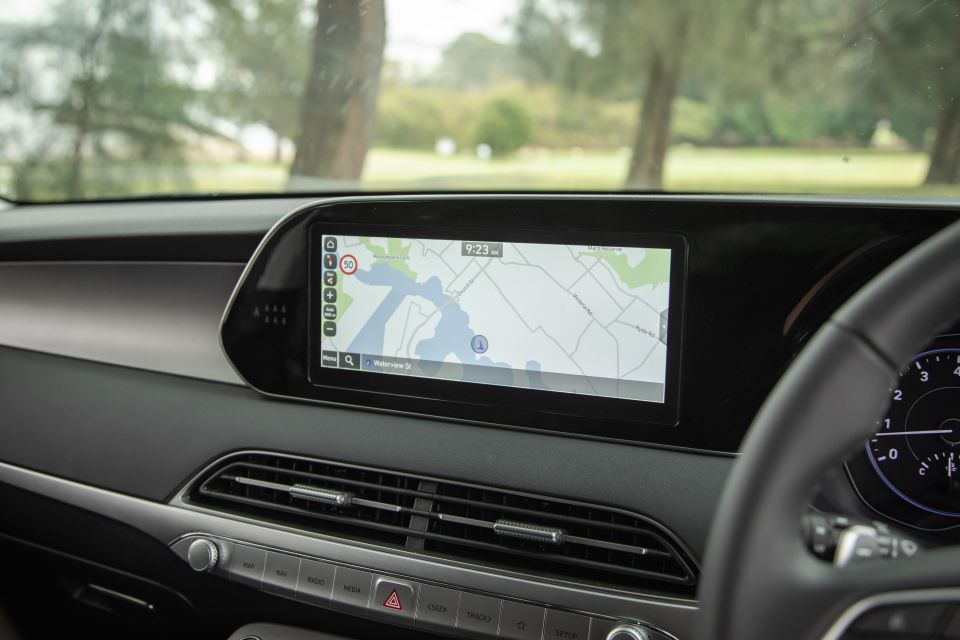
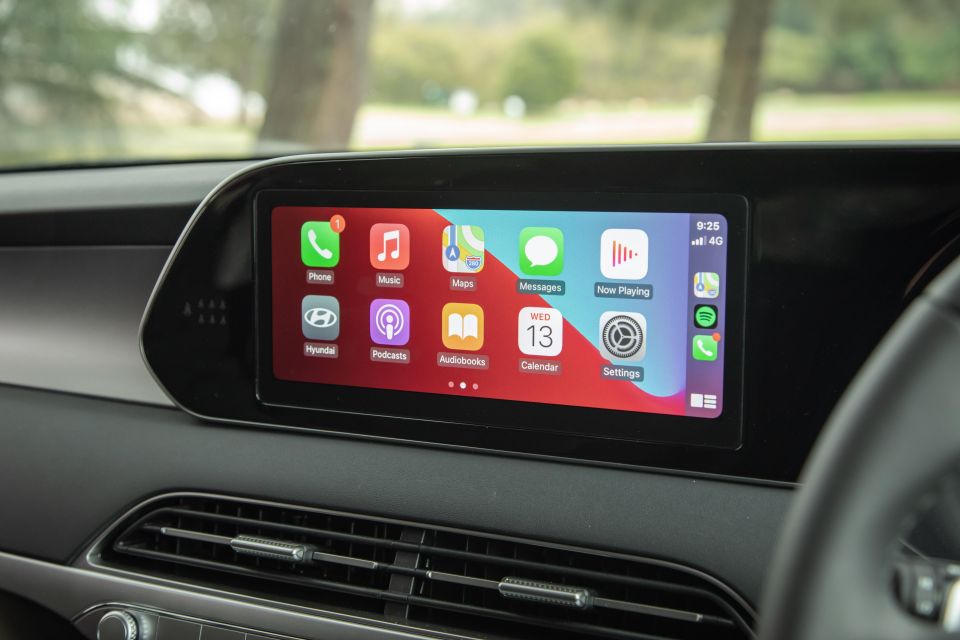
That this system was fitted to the old base Palisade really is of no real negative consequence. However, that it features wired smartphone mirroring, rather than the wireless design in the new base version’s 8.0-inch system, remains a bit of a head-scratcher right throughout Hyundai’s (and Kia’s) ranges.
The Elite isn’t short of device power. Outside of the handy inductive charging pad, there seem to be USB and 12V outlets in all manner of cubbies – even USB ports in the sides of the front row seatbacks that are presumably for the rear occupants. The console bin is huge, too, though the low door bins are somewhat compromised for volume, perhaps in an effort to exacerbate the cabin width and occupant comfort.
Sheer spaciousness is a big Palisade drawcard, particularly in row two. When it comes to genuine three-adult abreast comfort, in width as well as legroom, the big Korean owns it.
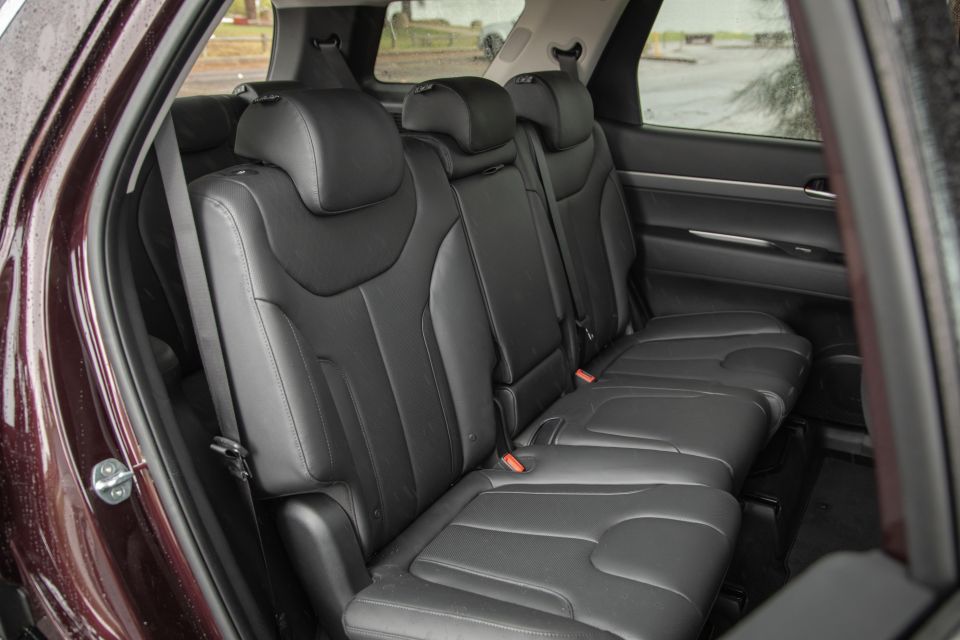
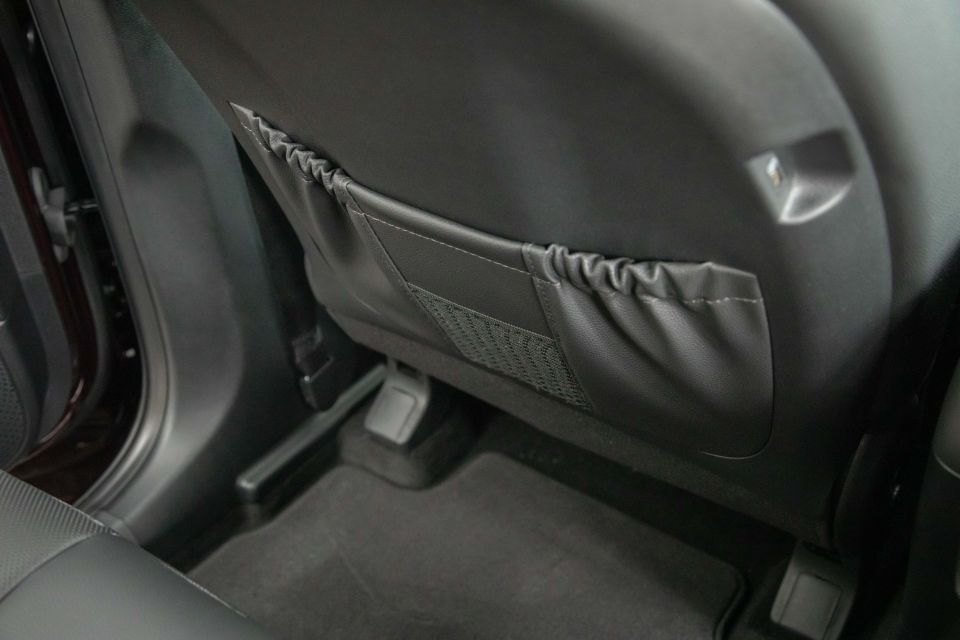
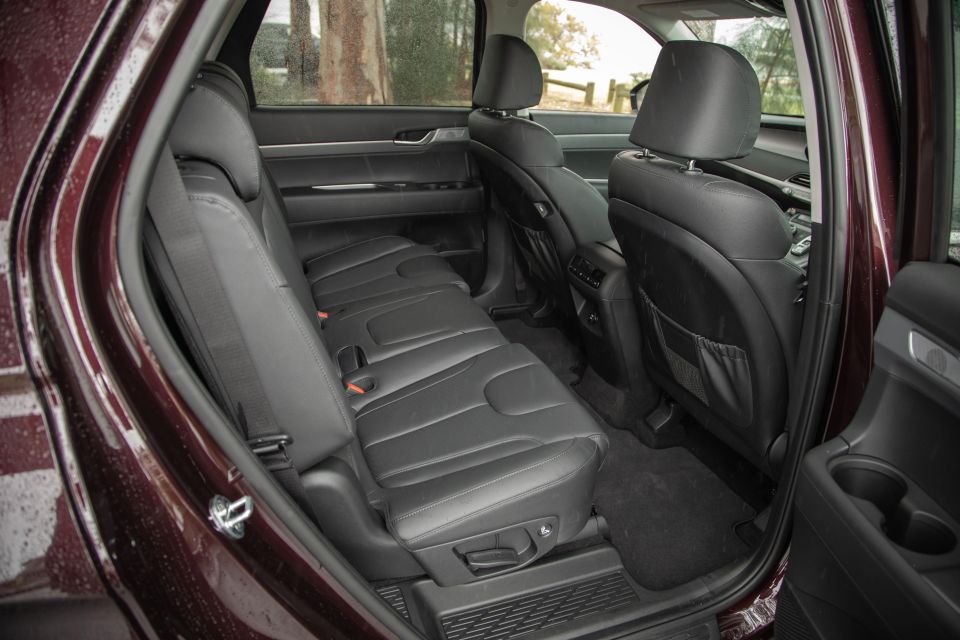

There’s plenty of tilt and slide adjustment to tune-up clearance across all three rows and you have to load it with basketball players to start nitpicking about any sort of spatial compromise.
Row two is fully featured, too, with the aforementioned ‘seat USB’ ports allowing for the fitment of a large climate control panel at the rear of the centre console.
The air vents are located overhead, in the ceiling. ISOFIX mounts, cupholders in the foldable arm rest and bottle holders in the doors complete the well-catered accommodation.
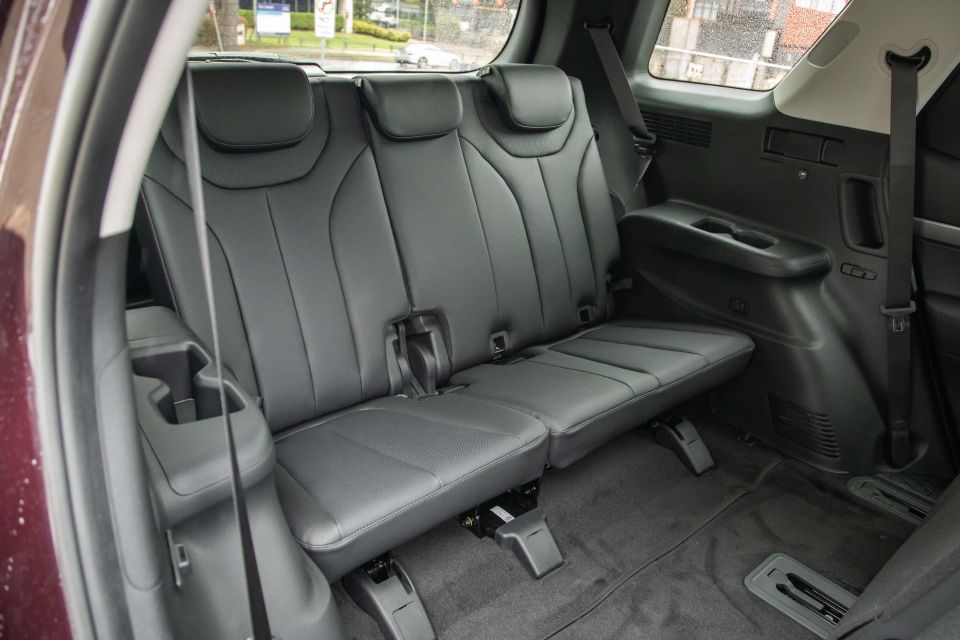
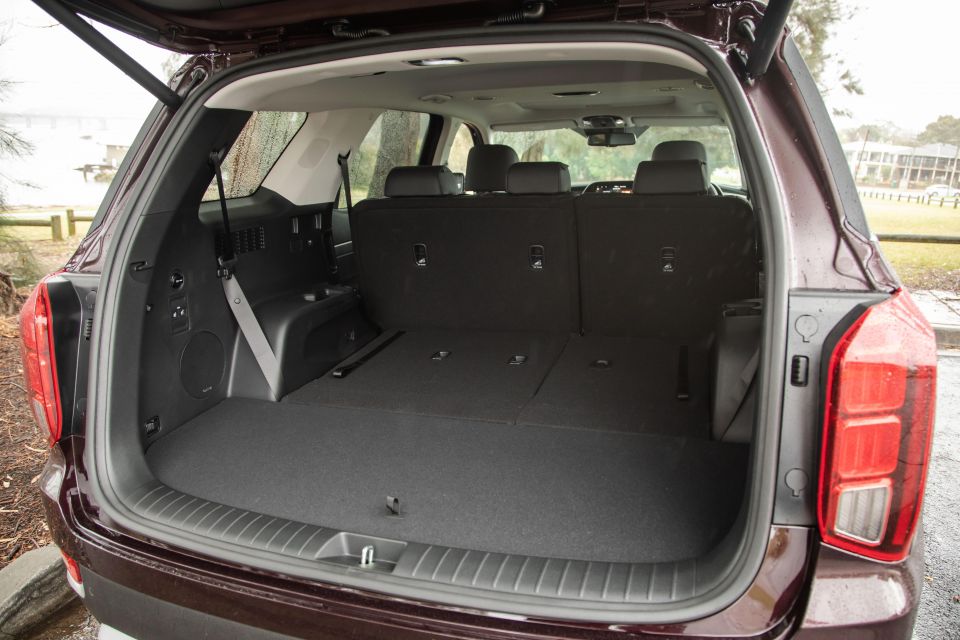
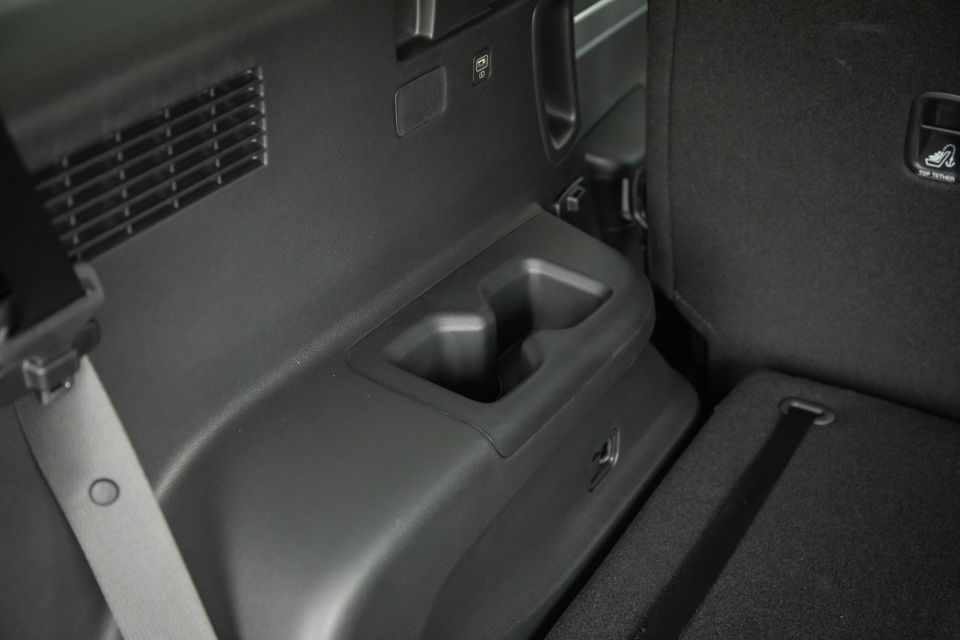
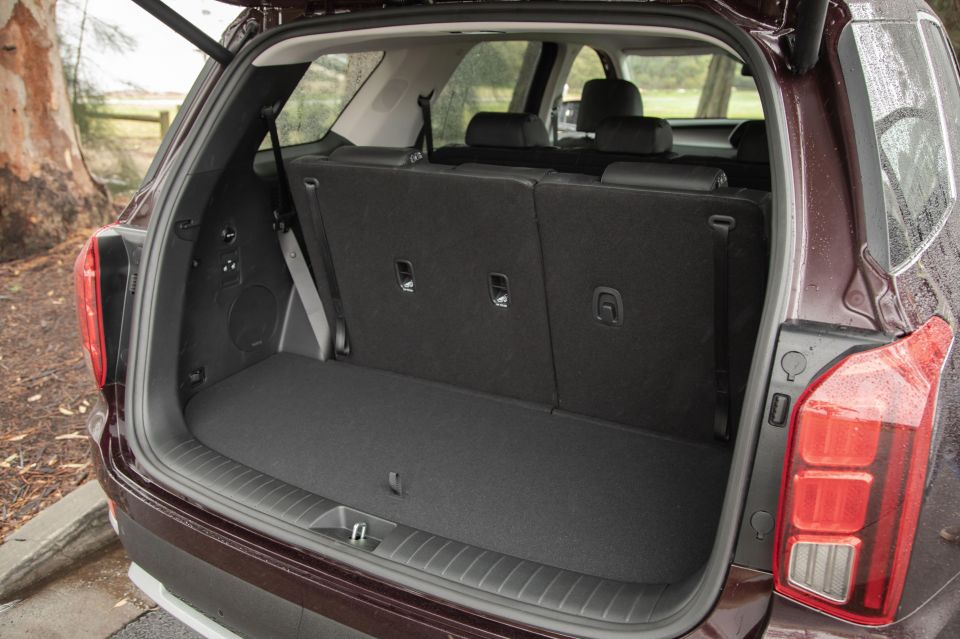
The huge amount of row two sliding and tilting allows for fairly dignified entry to row three, itself offering adjustment aplenty, such as cupholders, device power ports and ISOFIX/top-tether points.
While it’s ideally sized for slimmer folks and kids, it remains one of the most usable third rows on the market for space and natural comfort.
With all seating in play there’s 311 litres of boot space, albeit in a space that’s wide but not deep. Both the second and third rows have 60:40 split-folding seat backs, so if you find yourself needing to load something bulky you can stow certain seating sections to suit.
As a five-seater there’s a vastly more utilitarian 704L, and the Palisade can be converted into a very handy surrogate two-seat panel van given the impressively flat load area the rear cabin converts to.
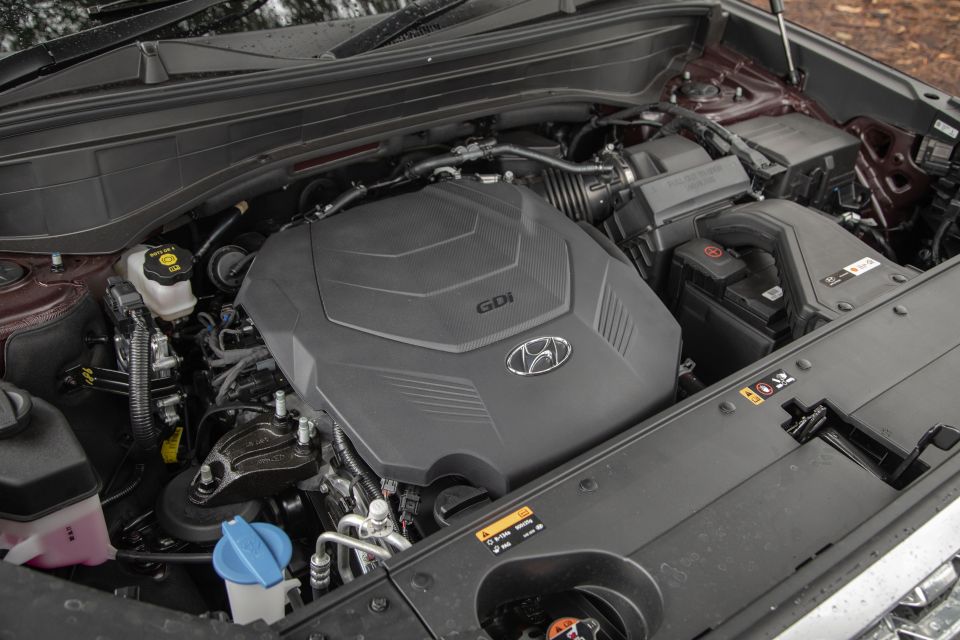
Unlike the 3.5-litre unit fitted to Santa Fe and Staria, the Palisade is powered by a larger 3.8-litre naturally-aspirated petrol V6, good for 217kW at 6000rpm and 355Nm way up in the rev range at 5200rpm.
This engine is only offered with an eight-speed automatic transmission and front-wheel drive.
So you get a fair more power than you do opting for the (147kW) diesel alternative if not nearly as much torque (440Nm) and, of course, it’s the later that does most of the heavy lifting lugging around the big eight-seater.
Consumption is not great, if not necessarily surprising either. It comes with a 10.7L/100km combined claim, which is considerably thirstier than the more frugal diesel (7.3L/100km), though real-world consumption proved impressively close to what’s advertised on the box.
The big V6 also runs happily on regular 91 RON fuel in its 71-litre tank.
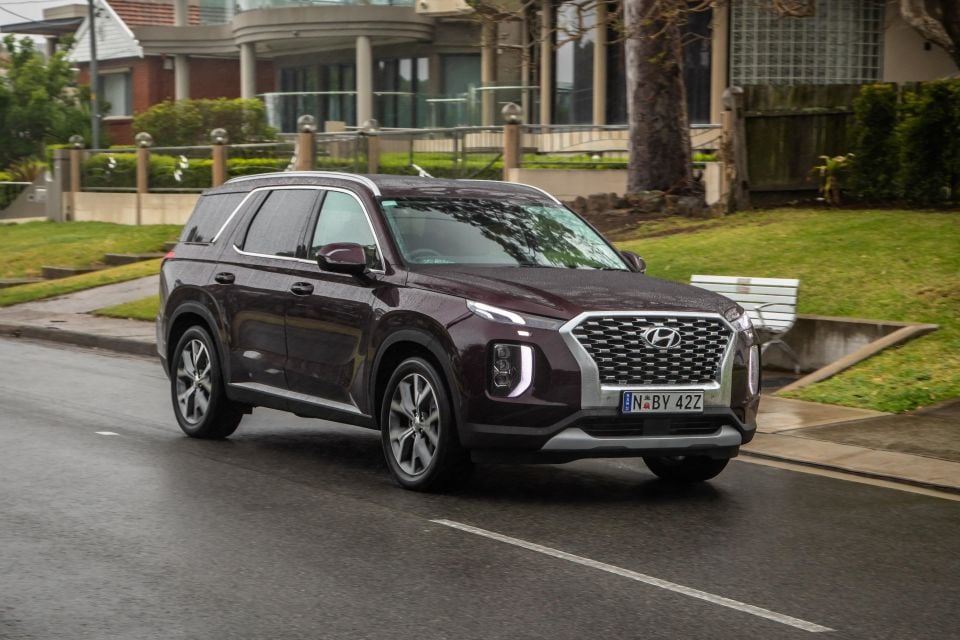
I’ll say it up front: the 3.8-litre is much fitter engine than the 3.5 in Santa Fe and Staria, which I happened to review just prior to my time in Palisade.
Despite the circa-two-tonne heft the reasonably modest 355Nm needs to haul, this petrol six is unflustered. It’s seemingly unstressed most of the time, remaining quiet and a pillar of smoothness.
The same can be said about the homespun eight-speed auto. It’s strangely tidier, cleaner and more responsive than the good many other Hyundai-built autos I’ve driven recently. The jury is out as to where its fundamental engineering or its combined calibration, or both, lay at the quality of the powertrain refinement, but this package is a real class act.
Traction is excellent, torque-steer is nonexistent, and once you bury the right foot the Palisade piles on enough performance to both satisfy and safely keep you and your loved ones out of harm’s way attempting to overtake, merge or make a hasty exit from a side street in fast-moving traffic. It’s no rocket ship, of course, but the powertrain fits the bill very neatly indeed.
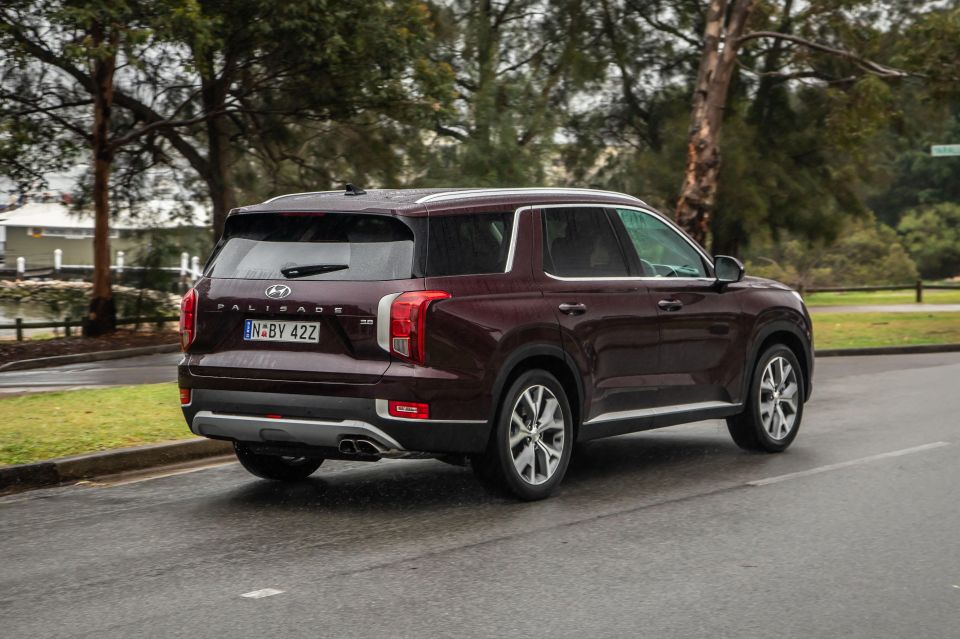
That said, the jury is out – at least for the Elite – as to whether the diesel might worth the extra $4000.
While the Palisade certainly isn’t left wanting for torque in isolation, we have previously found the oiler was a more suitable fit for such a big package. What I will state here is that, on singular merit, the petrol feels capable enough.
Equally impressive is the general on-road behaviour, particularly the ride. Again, the key descriptor is ‘refined’. The suspension tune clearly favours comfort over anything else, but with no apparent sacrifice to body control and what modest athleticism you could seriously expect from an eight-seat SUV.
Bar some faintly fidgety responses to square-edged speed bumps – mostly in vertical wheel control – the suspension is impressively pliant, well measured and very settling once you’ve negotiated any rough stuff.
It sits flat with confidence, there’s a real dignity to how planted it remains over most surfaces, and its handling is reasonably crisp and cooperative, albeit without the sort of slightly frisky nature of a more sport-tuned SUV.
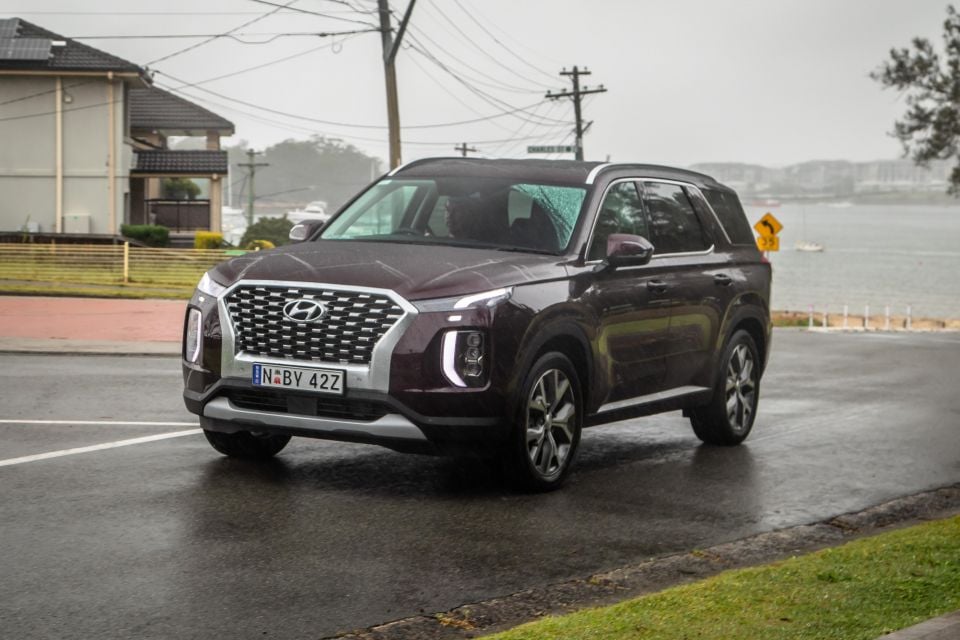
You sense Hyundai spent a long while tuning the ride to offer as much isolation between occupants and the outside world as possible. Sure, it’s no S-Class, but the Palisade makes a helluva nice, serene grand tourer.
As is nature for such a beast, it can get tricky to park: often times the kerb-side rear corner needs to be kept in close check reverse parking; sometimes you need to be surgical when perpendicular parking due to sheer width to prevent banging doors on neighbouring vehicles. That said, forward visibility is actually much better than you might expect from such a big unit.
Assistance systems, bar the ever-annoying if defeatable ‘zone’ alerts, performed admirably, in that they’re transparent in operation, only trigger in situations that warrant it, and don’t feel inclusive or over-protective.
Thankfully the occasionally annoying lane-following smarts can be deactivated with a held push of the button the steering wheel.
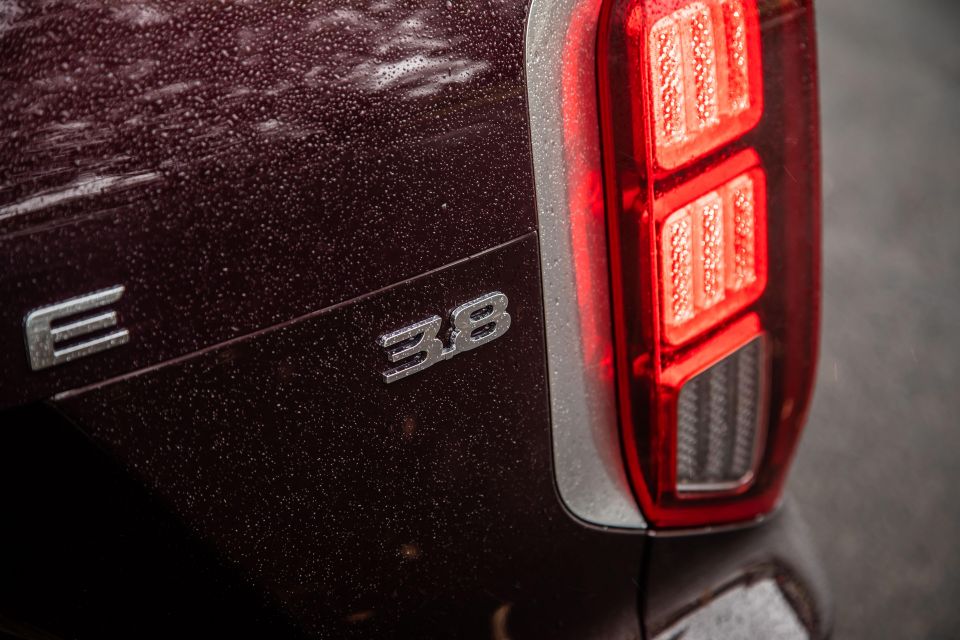
Where expert car reviews meet expert car buying – CarExpert gives you trusted advice, personalised service and real savings on your next new car.
The Palisade comes with a five-year, unlimited-kilometre warranty with roadside assistance throughout.
Service intervals are a typical 12 months or 15,000kms, whichever comes first, at $399 per visit capped, which is slightly cheaper than that of the diesel ($469).
You can also pre-pay for scheduled maintenance plans spanning three, four or five years – costing $1197, $1956 and $1995 respectively.
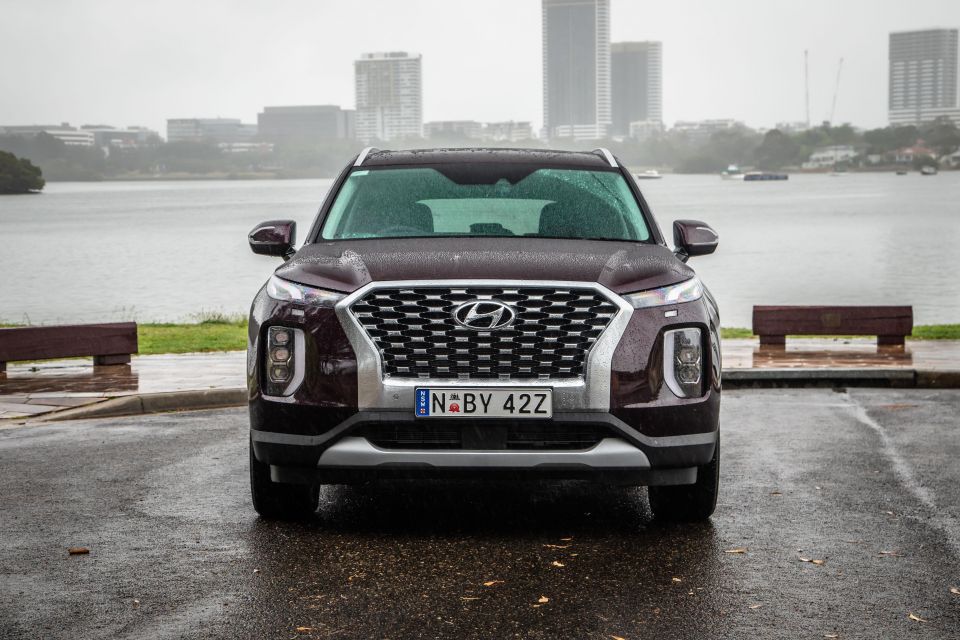
As car reviewers go, I’m quite late to the Palisade party – the only person I know of in my insular little industry who actually drove the stablemate Staria before the eight-seat SUV.
I’ve also spent oodles of time in the Kia Carnival, which arguably remains the most practical family hauler out there. And I have clocked up literally thousands of kilometres in the Santa Fe, an SUV I’m quite fond of and which you can get in fruity Highlander spec for the same money as this mid-grade eight-seater.
But boy, do I like this Palisade. It’s where this 51-year-old father of three would park the money. That’s money perhaps not the mostly wisely or pragmatically spent, but I don’t care…
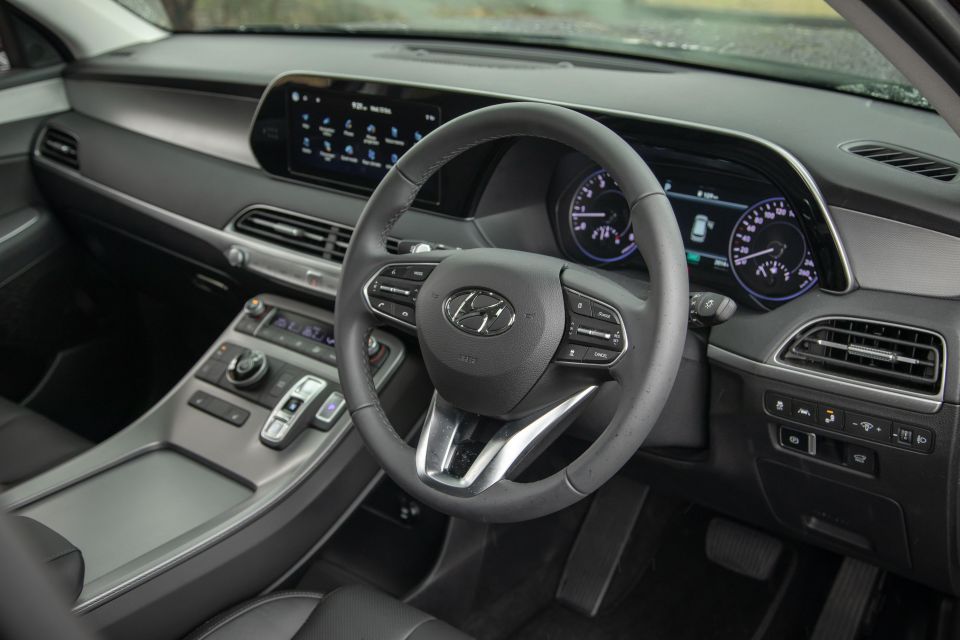
Personally, I’m drawn to the X-factor of the thing, and the cut of its jib. It has this commanding, luxurious vibe and, to a large extent, delivers as much in the experience. That it’s smart and practical (enough) by comparative measure to similarly-priced alternatives would be enough to seal the deal.
It doesn’t really do anything great or revolutionary, other than offer eight proper seats where money spent elsewhere won’t. But equally, for what it promises, it really doesn’t do anything annoying, let alone much wrong. On top of that, it’s an awful lot of appealing metal, glass and rubber for its asking price.
Base trim could be shrewder. The Highlander would be undoubtedly nicer. But neither are reasons to trim the Elite V6 FWD from your shortlist when considering a comfort-laden plus-sized family hauler with class.
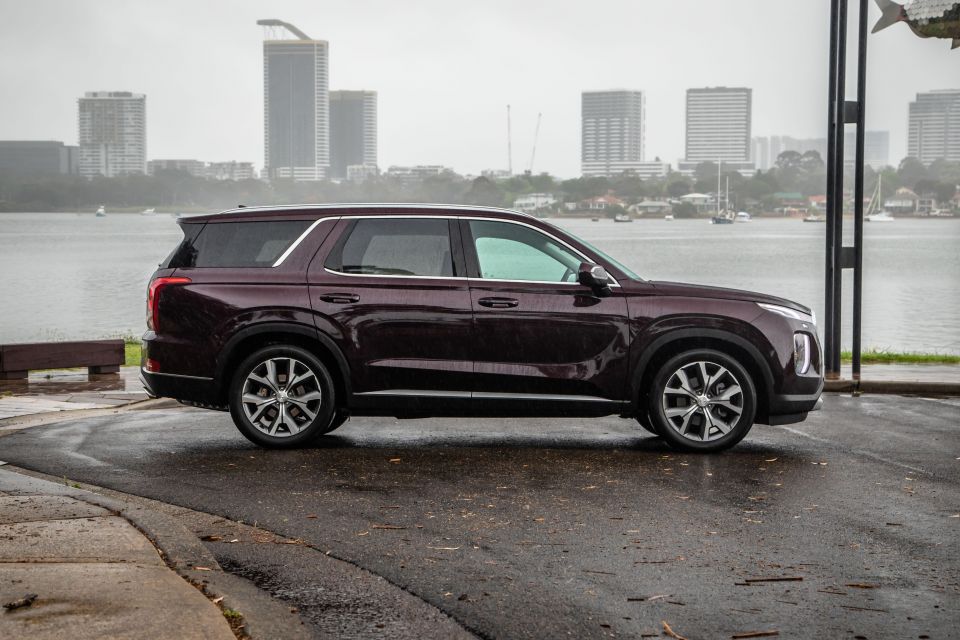
Click the images for the full gallery
Where expert car reviews meet expert car buying – CarExpert gives you trusted advice, personalised service and real savings on your next new car.


Ben Zachariah
3 Days Ago
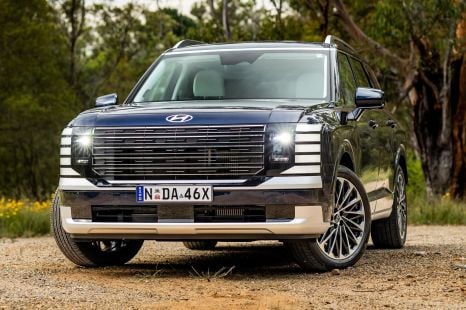

Matt Campbell
6 Days Ago
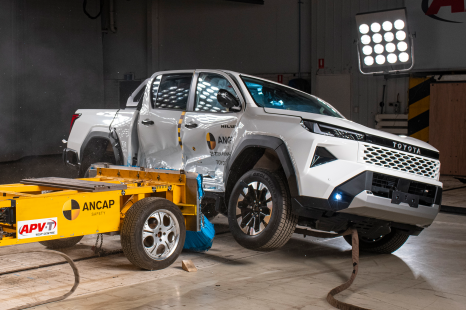

William Stopford
12 Days Ago
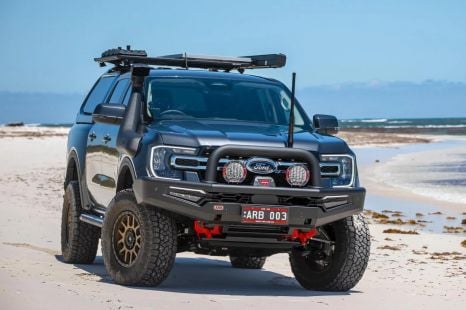

William Stopford
12 Days Ago
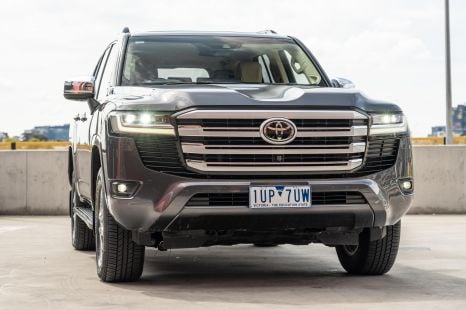

Ben Zachariah
13 Days Ago
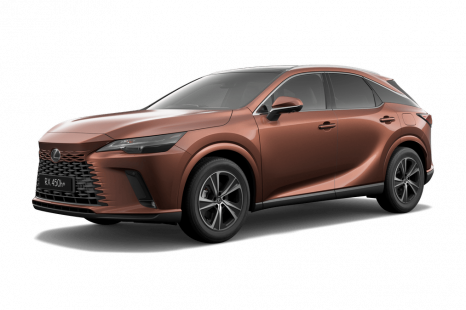

William Stopford
17 Days Ago